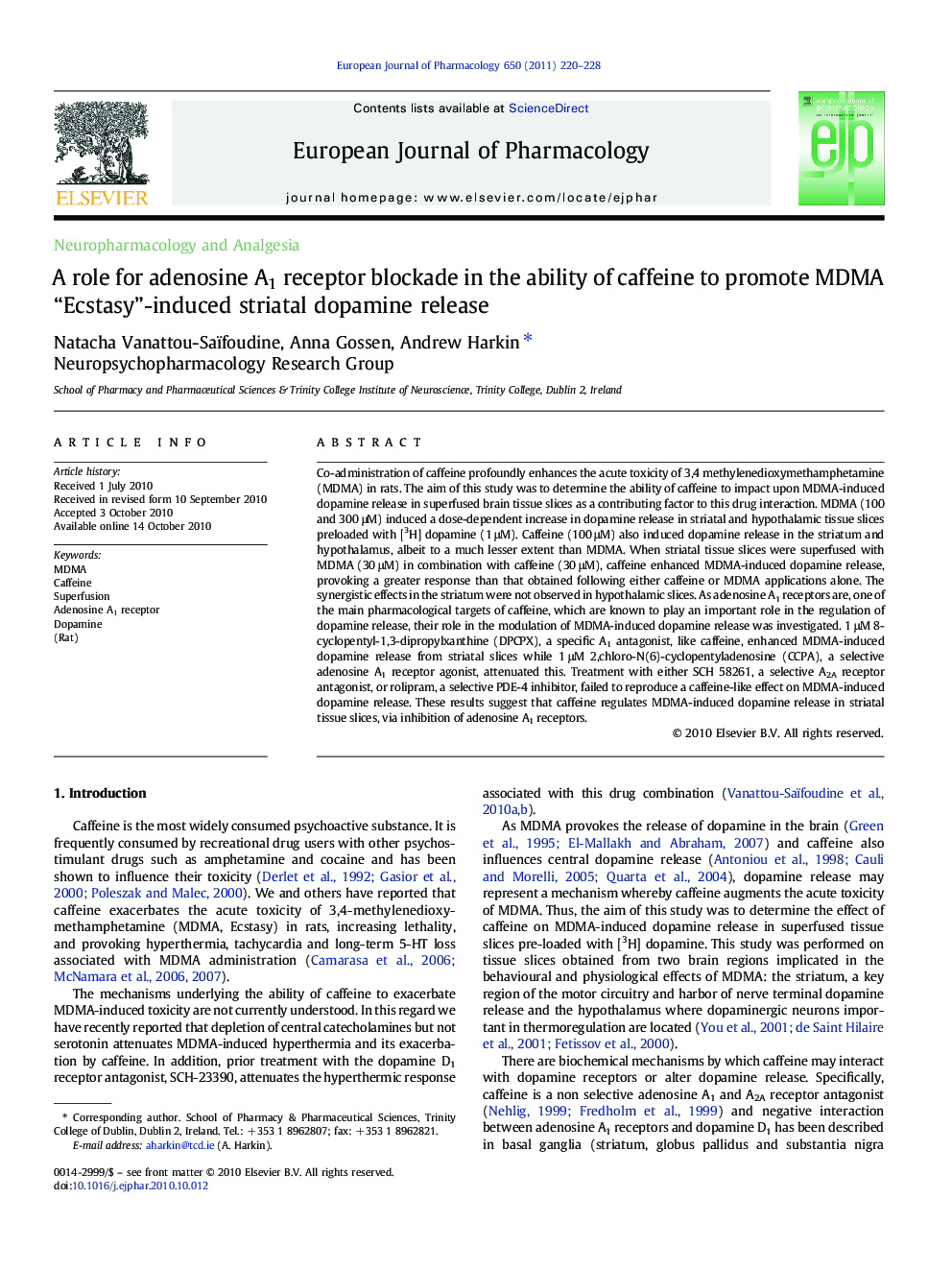| کد مقاله | کد نشریه | سال انتشار | مقاله انگلیسی | نسخه تمام متن |
|---|---|---|---|---|
| 2533212 | 1559041 | 2011 | 9 صفحه PDF | دانلود رایگان |

Co-administration of caffeine profoundly enhances the acute toxicity of 3,4 methylenedioxymethamphetamine (MDMA) in rats. The aim of this study was to determine the ability of caffeine to impact upon MDMA-induced dopamine release in superfused brain tissue slices as a contributing factor to this drug interaction. MDMA (100 and 300 μM) induced a dose-dependent increase in dopamine release in striatal and hypothalamic tissue slices preloaded with [3H] dopamine (1 μM). Caffeine (100 μM) also induced dopamine release in the striatum and hypothalamus, albeit to a much lesser extent than MDMA. When striatal tissue slices were superfused with MDMA (30 μM) in combination with caffeine (30 μM), caffeine enhanced MDMA-induced dopamine release, provoking a greater response than that obtained following either caffeine or MDMA applications alone. The synergistic effects in the striatum were not observed in hypothalamic slices. As adenosine A1 receptors are, one of the main pharmacological targets of caffeine, which are known to play an important role in the regulation of dopamine release, their role in the modulation of MDMA-induced dopamine release was investigated. 1 μM 8-cyclopentyl-1,3-dipropylxanthine (DPCPX), a specific A1 antagonist, like caffeine, enhanced MDMA-induced dopamine release from striatal slices while 1 μM 2,chloro-N(6)-cyclopentyladenosine (CCPA), a selective adenosine A1 receptor agonist, attenuated this. Treatment with either SCH 58261, a selective A2A receptor antagonist, or rolipram, a selective PDE-4 inhibitor, failed to reproduce a caffeine-like effect on MDMA-induced dopamine release. These results suggest that caffeine regulates MDMA-induced dopamine release in striatal tissue slices, via inhibition of adenosine A1 receptors.
Journal: European Journal of Pharmacology - Volume 650, Issue 1, 10 January 2011, Pages 220–228